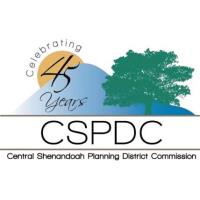Regional All Hazards Mitigation Plan Committee Launches Online Survey
April 09, 2018


Survey will be used to assess hazard readiness of residents in the region.
STAUNTON (April 6, 2018) — As part of the development of a first-of-its-kind Regional Community Wildfire Protection Plan (CWPP) and to help update the Central Shenandoah Valley All Hazards Mitigation Plan, the Central Shenandoah Planning District Commission (CSPDC)’s Regional All Hazards Mitigation Plan Committee is requesting public input via an online survey. Survey results will help first responders and the hazards mitigation planning team better understand perceptions, opinions, and natural hazard readiness of residents in the region. The online survey is located at: https://www.surveymonkey.com/r/shenandoahhazard
All Hazards Mitigation Plans identify and rank natural hazards that impact a region, gather historical information about specific severe weather events, offer broad categories of mitigation strategies, and provide a regional capabilities assessment. Maintaining a plan is an eligibility requirement for certain federal hazard mitigation grant funding mandated by the Disaster Mitigation Act of 2000. The Central Shenandoah Valley All Hazards Mitigation Plan was first approved and adopted in 2005, and is updated periodically to reflect additional weather events, completed mitigation projects and applicable locality activity, as well as to incorporate new information collected from public surveys and educational events. The update process is supported by the CSPDC and led by a committee made up of local government staff, regional representatives of state agencies, and other interested citizens and organizations.
The development of a CWPP has been made possible by grant funds from the Virginia Department of Emergency Management through the Federal Emergency Management Agency (FEMA)’s Pre-disaster Mitigation Grant Program (PDM). PDM is a nationally competitive grant program, for which FEMA awards funds for eligible projects submitted by local governments, state agencies, and planning district commissions.
Community Wildfire Protection Plans cover such issues as wildfire response, hazard mitigation, community preparedness, and structural protection. All twenty-one jurisdictions within the CSPDC region (five counties, five cities, and eleven towns) are eligible to participate in the planning process. Participating in CWPP development will help communities throughout the region clarify and refine their priorities for protection of life, property, and critical structures in the Wildland Urban Interface. A Wildland Urban Interface is a zone where structures and other human development are located within areas that have naturally occurring wildfire fuels like forests and underbrush.
For more information contact Rebecca Joyce, (540) 885-5174, rebecca@cspdc.org
